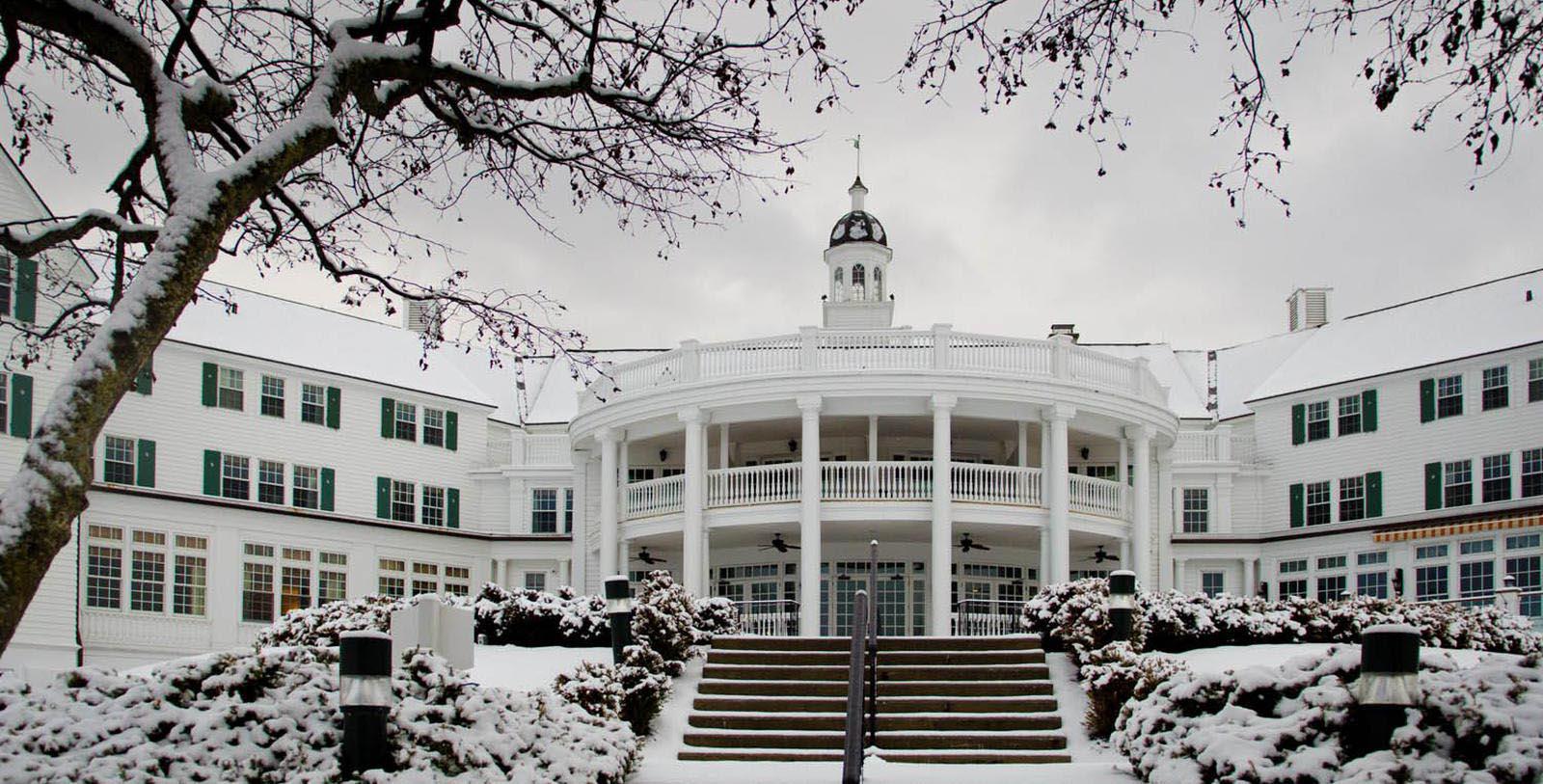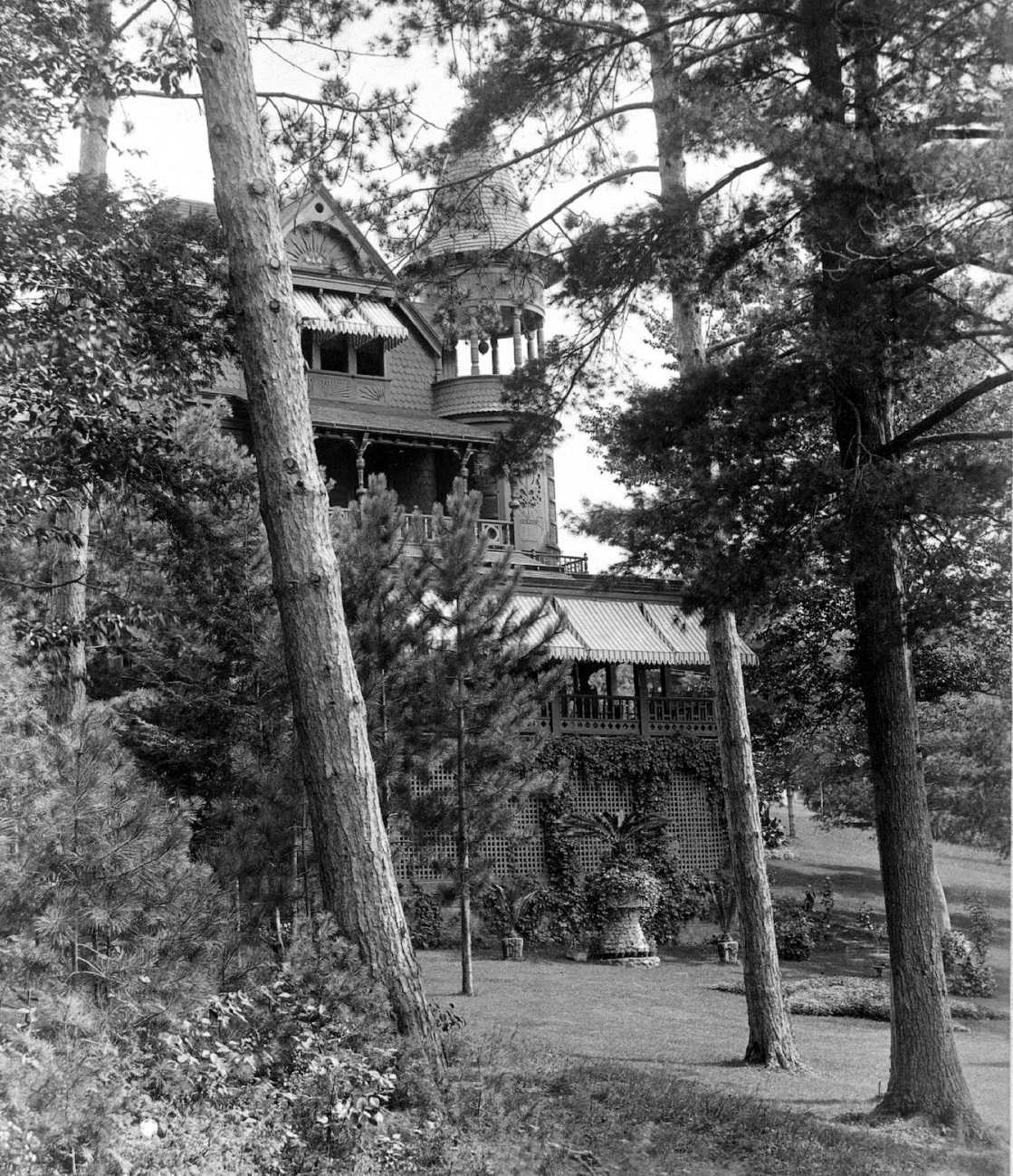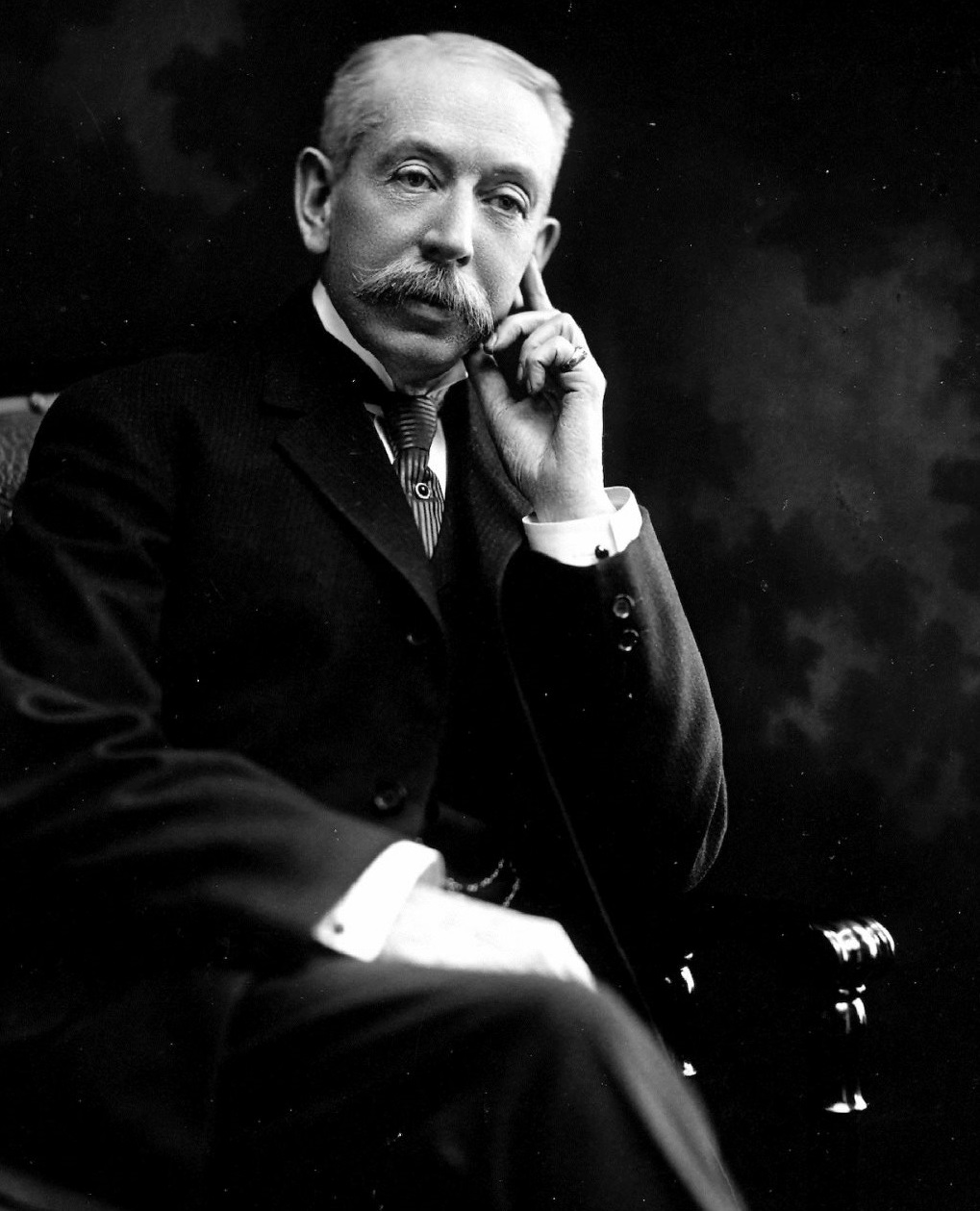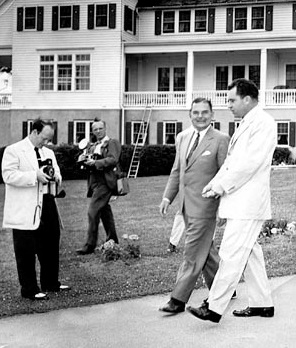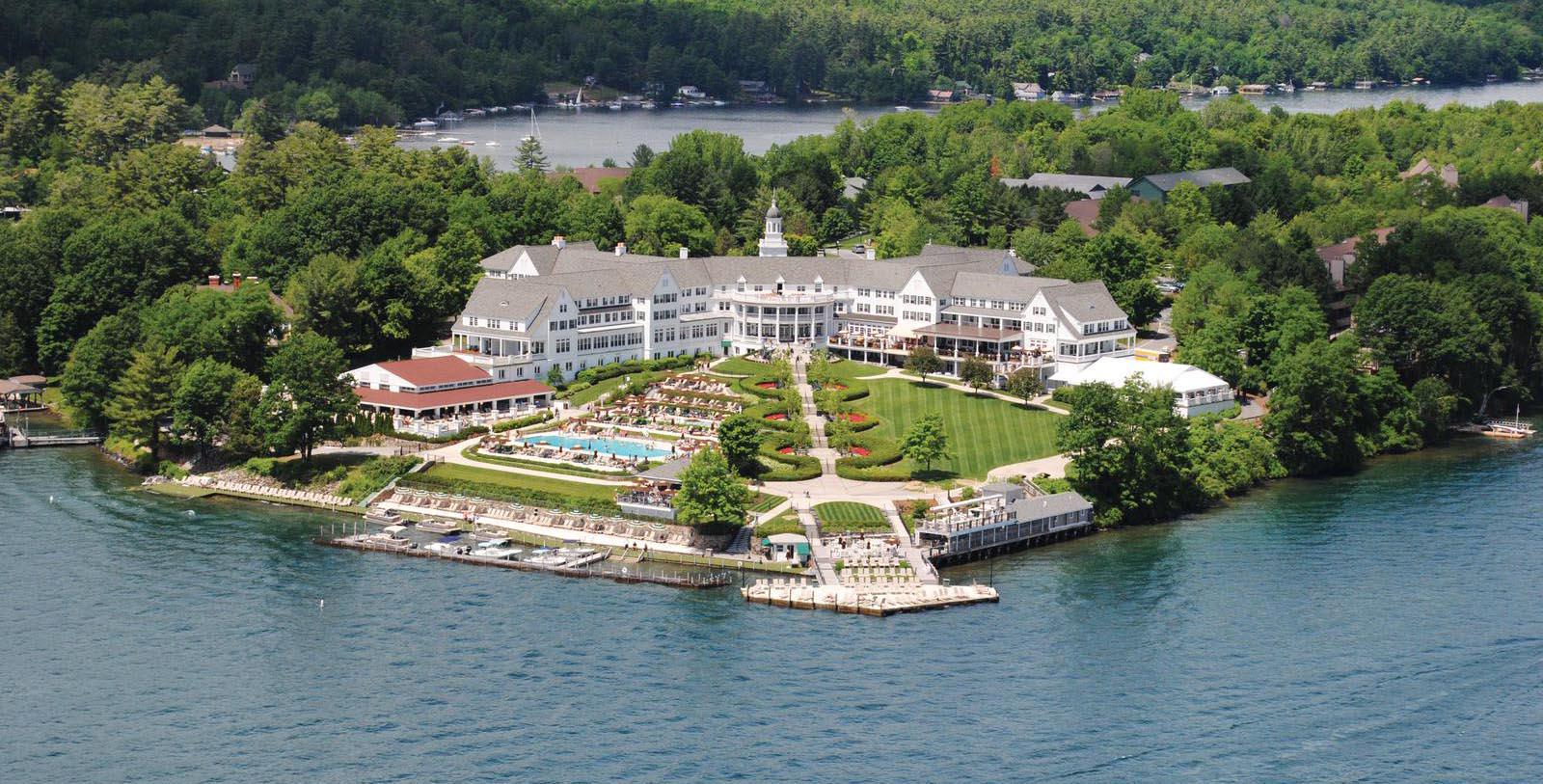Receive for Free - Discover & Explore eNewsletter monthly with advance notice of special offers, packages, and insider savings from 10% - 30% off Best Available Rates at selected hotels.
the sagamore history
Discover The Sagamore Resort, a luxurious destination in the Adirondacks, which opened in 1883.
The Sagamore Resort, a member of Historic Hotels of America since 1991, dates back to 1883.
VIEW TIMELINEThe Sagamore Resort’s illustrious history began more than a century ago, when hotel operator Myron O. Brown was inspired to build an exclusive resort on the shores of the majestic Lake George. The longtime proprietor of the Mohican House in the village of Bolton Landing, he had watched as the area rapidly emerged as a popular holiday destination by the end of the 1800s. In particular, Brown had noticed that some of the wealthiest families from several states across the northeast had summered in the region with regular frequency. As such, he determined to create a new luxurious resort on the undeveloped Green Island that sat just off the coast of the lake’s eastern bank. He subsequently turned to support from four Philadelphia millionaires, who vacationed in the stately mansions in the nearby neighborhood of Millionaires’ Row: E. Burgess Warren, William B. Bement, Robert Glendenning and George Burnham. Together, they purchased Green Island for a sum of $30,000 as and formed The Green Island Improvement Company to help finance the resort’s construction. The group was then joined by investor John Boulton Simpson, who emerged as the company’s president. Construction commenced in 1882 and lasted for nearly a year. Since a majority of the investors hailed from Philadelphia, they turned to the Wilson Brothers—an architectural firm with deep connections to the city—to lead the design team. What the company managed to achieve was nothing short of spectacular, as the new resort soon stood as a brilliant example of Queen Anne-style architecture.
When the location finally opened its doors in July of 1883, it was received throughout the Adirondacks with universal acclaim. Brown and his colleagues had decided to name their prestigious new business as “The Sagamore Resort,” in honor to the region’s rich Native American heritage. In fact, the word “sagamore” meant “respected chief,” which was a direct reference to the character of Chingachgook in James Fenimore Cooper’s classic novel, The Last of the Mohicans. Elevated to the status of general manager, Brown guided the new resort through its first prosperous summer season. It seemed that under his watch, every guestroom within the resort was constantly booked. He also made a significant profit, too, as the room rate was set at $4.00 per day! This prosperity lasted for nearly a decade, until a structural accident forced the resort to shutter its doors. Nevertheless, Brown and the other directors of the Green Island Improvement Company determined to reopen their magnificent destination. The Wilson Brothers of Philadelphia returned to reconstruct The Sagamore, which took a mere five weeks to complete. While the resort mostly looked the same, the firm changed a few subtle details like the shape of its once-iconic octagonal turret. In June of 1894, The Sagamore Resort thus opened once more. Not only did guests encounter more available guestrooms, but they had access to a wealth of new activities that ranged from golf to horseback riding.
Myron Brown carried on as the general manager of the resort, retiring from the business in 1905. The hotel was subsequently leased to C. Allen Linsley, the previous supervisor of the Hampton Terrace Hotel in North Augusta, Georgia. Among the immediate changes that occurred at The Sagamore during Linsley’s time as the new general manager was the creation of a wrap-around porch, as well as three new floors of guestrooms that faced directly out onto Lake George. Guests quickly returned to The Sagamore, transforming it back into one of the region’s most exclusive locations. But bad luck befell the resort once more when another on-site calamity damaged it considerably in 1914. But unlike the first accident, the resort sat dormant for the next ten years as rumors swirled of its eventual demise. Fortunately, salvation arrived in the form of Ernest Van Rensselaer Stires, who inspired the Green Island Improvement Company to rebuild The Sagamore. Plans for a new iteration of the resort were fully underway in 1922, with architect Robert Rheinlander’s design compositions calling for a complete break with its previous appearance. Instead of reconstructing the same Queen Anne-style design principles, Rheinlander decided to use Colonial Revival-style architecture in a vein similar to that of former U.S. President George Washington’s Mount Vernon estate. The blueprints specifically conceived of building a three-story building that would be flanked by two-story wings on each side. A colonnaded terrace would subsequently replace the grand porch, too.
The Sagamore Resort reopened its doors again in 1923, but guests were slow to come back to the destination. To help generate interest, the Green Island Improvement Company hired the respected hotelier Karl P. Abbott to manage the resort. Abbott soon struck a deal with the company to build more guestrooms for him if he managed to improve The Sagamore’s popular appeal. Always an eccentric man, Abbott pursued a wealth of marketing strategies that included hiring a professional team of chefs for the resort’s primary kitchen. When the Green Island Improvement Company saw that Abbott had done the impossible, it immediately began constructing his desired expansion in the fall of 1929. Yet, the project proved to be ill-timed for the Great Depression spread throughout the nation the following year, disrupting the economies of every state. Construction stalled for a moment but resumed quickly when a rich entrepreneur from St. Louis named William H. Bixby stepped in to help. Bixby had spent many years vacationing in Bolton Landing, and had developed a close friendship with one of the directors of the Green Island Improvement Company, Dr. William G. Beckers. Thanks to Bixby’s amazing financial contributions, The Sagamore was able to debut its new additions in time for the 1930 holiday season.
Despite the great economic hardships brought on by the Great Depression, The Sagamore Resort had little trouble filling all of its accommodations. It even found itself financially empowered to buy The Sagamore Golf Course on nearby Federal Hill, which had been designed by the great Donald Ross. This popularity remained at an all-time high, even as the nation entered World War II, as well as the Cold War shortly thereafter. The resort attracted all sorts of high-profile guests, just as it had when it first opened at the height of the Gilded Age. Perhaps the greatest example of its appeal among the country’s affluent and influential was when it served as the site of the 46th Annual National Governor's Conference in 1954. Presided over by Vice President Richard Nixon and New York Governor Thomas Dewey, the conference heralded U.S. President Dwight D. Eisenhower’s plan to build the National Interstate Highway System. Attended by all of America’s 48 state governors (Alaska and Hawaii were still territories), the meeting turned out to be one of the event’s most historic gatherings. But as times and tastes changed, The Sagamore fell into disrepair from a prolonged lack of business and closed its doors in 1981. Two years later, though, real estate developer Norman Wolgin—also of Philadelphia—purchased the resort with the desire to restore its former grandeur. Wolgin formed a partnership under the name “Green Island Associates” with Kennington Ltd., Inc. of Los Angeles. The two entities oversaw The Sagamore’s splendid restoration and secured its inclusion on the National Register of Historic Places. Like a phoenix rising from the ashes, this outstanding resort is once again the leading destination along Lake George. Truly, the future has never looked brighter.
-
About the Location +
The Sagamore Resort resides within the community of Bolton Landing—a hamlet located within the greater Town of Bolton. Bolton itself is a small bucolic town of just a few thousand people that rests on the shoreline of Lake George in New York’s famed Adirondacks. Bolton was originally founded at a time when Lake George sat at the frontier of New York’s expanding borders in the years immediately following the American Revolutionary War. Before the conflict, the area had long been occupied by the Mohawk of the Iroquois Confederacy. Further to the north were the French colonials of New France, whose bastion of power was situated across the St. Lawrence River in Québec City. In fact, some of the first Europeans to explore the region were French, as the great Samuel de Champlain investigated the region in 1609. Several decades later, a French-Canadian Jesuit missionary named Isaac Jogues returned to the area and gave the lake its first name—Lac du Saint-Sacrament. Once the Netherlands officially lost control over the lower regions of New York after the Second Anglo-Dutch War, British and French settlers began pushing further into the Adirondacks. This tensions finally reached a breaking point in the 1750s, when France and the United Kingdom fought for control over the region during the Seven Years’ War.
The conflict in the colonies became known as the “French and Indian War.” The war itself eventually arrived at the Lac du Saint-Sacrament in September of 1755, when an army of colonial British Americans and Mohawk Indians fought and defeated the French. Led by Sir William Johnson, the British army seized the entire area and renamed it “Lake George” after King George II. They even commemorated the fight as the “Battle of Lake George.” In the days following the battle, Johnson constructed his soldiers to erect Fort William Henry at the southern end of the lake. The fort itself was christened in honor for the king’s grandson, Prince William Henry. But the French did not abandon the region quietly, constructing a massive fortification called Fort Carillon at the opposite end of the lake. The French reinforced the citadel’s garrison and assigned a new commander, Louis-Joseph de Montcalm. In 1757, Montcalm besieged Fort William Henry and set it ablaze when the British finally surrendered. As the British retreated to Fort Edward further south along the Hudson River, Native Americans allied to France ambushed the column. The assault would forever be known as “The Massacre at Fort William Henry.”
France ultimately lost the Seven Years War, which gave nearly all its colonial possessions in Canada to the United Kingdom. Despite the removal of the French threat from North America, the British still saw fit to reinforce its less densely populated territories. Lake George itself served the strategically important role of protecting the main line of communication between the major settlements of Montréal and New York City. The British subsequently renovated the two forts at either end of Lake George, filling them with new garrisons. The importance of the lake became more apparent when the Thirteen Colonies rebelled against the British Crown in the 1770s. Among the first acts by American patriots was the capture the arsenal at Fort Carillon, which had recently been renamed as “Fort Ticonderoga.” In 1775, a motley crew of frontiersmen known as the “Green Mountain Boys” overwhelmed the citadel’s soldiers. Led by Benedict Arnold and Ethan Allen, the American soldiers subsequently moved its munitions to the nascent Continental Army stationed outside of Boston. While the British briefly regained Fort Ticonderoga in 1777, the Americans successfully recaptured it a final time after the Battle of Saratoga a year later.
Once peace arrived in the newly formed United States, small towns like Bolton began appearing throughout the Adirondacks. Americans soon recognized the uniqueness of the area’s inherent beauty, especially Lake George. Future U.S. President Thomas Jefferson encapsulated this perception brilliantly in a letter he penned to his daughter, in which he stated: “Lake George is without comparison, the most beautiful water I ever saw.” Another U.S. President would find the area similarly enchanting more than a hundred years later—Theodore Roosevelt. Long an avid outdoor enthusiast, Roosevelt often traveled from his home in Long Island to visit Lake George. In fact, he was hiking nearby Mount Marcy when word reached him of President William B. McKinley’s death. By this point, many Americans had constructed spectacular summer homes all along Lake George, making it one of the most exclusive places to stay in the United States. Several well-known artists began establishing several art colonies, too, including Martin Johnson Heade, John F. Kensett, Frank Vincent DuMond, E. Charlton Fortune, and George O’Keefe. But Lake George had already been immortalized in other forms of art, the most notable of which was James Francis Cooper’s classic novel, The Last of the Mohicans. Originally published in 1826, it has undergone several reprints and was even turned into a movie.
-
About the Architecture +
The current iteration of The Sagamore Resort displays some of the finest Colonial Revival-style architecture in the Adirondacks. Colonial Revival architecture today is perhaps the most widely used building form in the entire United States. It reached its zenith at the height of the Gilded Age, where countless Americans turned to the aesthetic to celebrate what they feared was America’s disappearing past. The movement came about in the aftermath of the Centennial International Exhibition of 1876, in which people from across the country traveled to Philadelphia, Pennsylvania, to commemorate the American Revolution. Many of the exhibitors chose to display cultural representations of 18th-century America, encouraging millions of people across the country to preserve the nation’s history. Architects were among those inspired, who looked to revitalize the design principles of colonial English and Dutch homes. This gradually gave way to a larger embrace of Georgian and Federal-style architecture, which focused exclusively on the country’s formative years. As such, structures built in the style of Colonial Revival architecture featured such components as pilasters, brickwork, and modest, double-hung windows. Symmetrical designs defined Colonial Revival-style façades, anchored by a central, pedimented front door and simplistic portico. Gable roofs typically topped the buildings, although hipped and gambrel forms were used, as well. This building remained immensely popular for years until largely petering out in the late-20th century. Nevertheless, architects today still rely upon Colonial Revival architecture, using the form to construct all kinds of residential buildings and commercial complexes.
The earlier versions of the resort, though, were cast in an architectural style known as Queen Anne. A successor to Eastlake architecture, Queen Anne became a widely popular architectural style at the height of the Gilded Age. Named in honor of 18th-century British monarch, Queen Anne, the architectural form started in England before migrating to the United States. Yet, its name is misleading, as it actually borrowed its design principles from buildings constructed during the Renaissance. While the appearance of Queen Anne-style buildings may differ considerably, they are all united by several common features. For instance, they are typically asymmetrical in nature, and are built with some combination of stone, brick, and wood. Those buildings also feature a large wrap-around porch, as well as a couple of polygonal towers. Those towers may also be accompanied by turrets along the corners of a building’s exterior façade. Queen Anne structures also have pitched, gabled roofs made with irregular shapes and patterns. Intricate wood carvings are a common sight throughout their layout, too, and are often designed in such a way to resemble different objects like an illusion. Clapboard paneling and half-timbering are a few other forms of woodworking that are regularly found somewhere within a Queen Anne-style structure.
-
Famous Historic Events +
46th Annual Conference of the National Governors Association (1954): The Sagamore Resort bears the distinction of hosting the 46th Annual Conference of the National Governors Association in July of 1954. Originally founded in 1908, the National Governors Association is a gathering of all the nation’s governors to discuss political matters related to the collective interests of the states. In essence, the National Governors Association functions as a public policy liaison between the states and the federal government, providing guidance to both the White House and Capitol Hill on everything from the allocation of tax funds to welfare reform. The organization typically creates its policy proposals through a series of meetings and networking seminars that are usually held at various conferences. Those events are presided over by a chair, which alternated every year between the Democratic and Republican parties. At the time of the 46th Annual Conference, New York’s Governor—Thomas Dewey—was the acting chairperson. Perhaps the most prestigious of those events historically speaking was the annual conference. The very first annual conference dealt with problems arising from natural resource allocations throughout the United States. Yet, over time, the agenda for the annual conferences has become quite diverse. While the state executives typically take the lead in guiding the conversations, the President of the United States may send members of their cabinet to introduce their own plans for the states. In 1946, that specific plan involved President Dwight D. Eisenhower’s intention to make good on the creation of a National Interstate Highway System.
The desire to construct something like the National Interstate Highway System had long persisted throughout the country, ever since automobiles appeared for mass use at the start of the 20th century. Federal efforts to actually develop a national highway grid first emerged with the passing of the Federal Aid Highway Act of 1921, although the furthest the law got toward creating a system of roads was a mere topographical map created by General John J. Pershing. U.S. President Franklin Delano Roosevelt revived the plans for an interstate highway, often telling his advisors of the importance such an infrastructural project would have upon the country. He even approved of legislation from Congress called the Federal Aid Highway Act of 1944 that established a way in which the federal government could both subsidize and supervise the construction. But the project truly got underway during the first presidential administration of Dwight D. Eisenhower. One of the first tasks that Eisenhower undertook as president was pitching his $50 billion plan for the creation of a real interstate highway system. Among the ways he introduced the proposal was by instructing his Vice President, Richard Nixon, to present it before the 46th Annual Conference National Governors Association. (Eisenhower would have attended himself but changed his plans at the last minute to go the funeral of his sister-in-law). Nixon read Eisenhower’s prepared notes, but he encountered fierce resistance to the plan due to its large budget. Fortunately, that animosity melted away when the governors collectively realized that the program would provide jobs and stir commerce within their respective states. The initial discussions about the National Interstate Highway System eventually gave rise to the Federal Aid Highway Act of 1956, which allocated some $25 billion to develop more than 41,000 miles of interlocking highways. That law is one of the lasting legacies of Eisenhower’s presidency.
-
Famous Historic Guests +
Gordon Persons, Governor of Alabama (1951 – 1955)
John Howard Pyle, Governor of Arizona (1951 – 1955)
Goodwin Jess “Goodie” Knight, Governor of California (1953 – 1959)
Daniel I.J. Thornton, Governor of Colorado (1951 – 1955)
John Davis Lodge, Governor of Connecticut (1951 – 1955)
James Caleb Boggs, Governor of Delaware (1953 – 1960) and U.S. Senator from Delaware (1961 – 1973)
Charley Eugene Johns, Governor of Florida (1953 – 1955)
Marvin Griffin, Governor of Georgia (1955 – 1959)
Leonard B. Jordan, Governor of Idaho (1951 – 1953) and U.S. Senator from Idaho (1962 – 1973)
William Stratton, Governor of Illinois (1953 – 1961)
George N. Craig, Governor of Indiana (1953 – 1957)
Leo Hoegh, Governor of Iowa (1955 – 1957)
Edward F. Arn, Governor of Kansas (1951 – 1955)
Lawrence Wetherby, Governor of Kentucky (1950 – 1955)
Robert F. Kennon, Governor of Louisiana (1952 – 1956)
Burton M. Cross, Governor of Maine (1953 – 1955)
Theodore McKeldin, Governor of Maryland (1951 – 1959)
Christian Herter, Governor of Massachusetts (1953 – 1957) and 53rd U.S. Secretary of State (1959 – 1961)
Gerhard Mennen "Soapy" Williams, Governor of Michigan (1949 – 1961)
Orville Freeman, Governor of Minnesota (1955 – 1961)
Hugh L. White, Governor of Mississippi (1936 – 1940; 1952 – 1956)
Phil M. Donnelly, Governor of Missouri (1945 – 1949; 1953 – 1957)
John Hugo Aronson, Governor of Montana (1953 – 1961)
Robert B. Crosby, Governor of Nebraska (1953 – 1955)
Charles H. Russell, Governor of Nevada (1951 – 1959)
Hugh Gregg, Governor of New Hampshire (1953 – 1955)
Robert B. Meyner, Governor of New Jersey (1954 – 1962)
Edwin Mechem, Governor of New Mexico (1951 – 1955; 1957 – 1959; 1961 – 1962) and U.S. Senator from New Mexico (1962 – 1964)
Thomas Dewey, Governor of New York (1943 – 1954)
William B. Umstead, U.S. Senator from North Carolina (1946 – 1948) and Governor of North Carolina (1953 – 1954)
Norman Brunsdale, Governor of North Dakota (1951 – 1957) and U.S. Senator from North Dakota (1959 – 1960)
Frank Lausche, Governor of Ohio (1945 – 1947; 1949 – 1957) and U.S. Senator from Ohio (1957 – 1969)
Johnston Murray, Governor of Oklahoma (1951 – 1955)
Paul L. Patterson, Governor of Oregon (1952 – 1956)
John S. Fine, Governor of Pennsylvania (1951 – 1955)
Dennis J. Roberts, Governor of Rhode Island (1951 – 1959)
James F. Byrnes, U.S. Secretary of State (1945 – 1947) and Governor of South Carolina (1951 – 1955)
Sigurd Anderson, Governor of South Dakota (1951 – 1955)
Frank Clement, Governor of Tennessee (1953 – 1959; 1963 – 1967)
Allan Shivers, Governor of Texas (1949 – 1957)
Joseph Bracken Lee, Governor of Utah (1949 – 1957)
Lee Earl Emerson, Governor of Vermont (1951 – 1955)
Thomas B. Stanley, Governor of Virginia (1954 – 1958)
Arthur B. Langlie, Governor of Washington (1941 – 1945; 1949 – 1957)
William C. Marland, Governor of West Virginia (1953 – 1957)
Walter J. Kohler Jr., Governor of Wisconsin (1953 – 1957)
Clifford Joy Rogers, Governor of Wyoming (1953 – 1955)
Richard Nixon, 37th President of the United States (1969 – 1974)
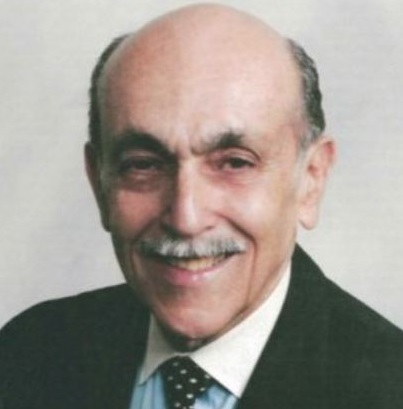
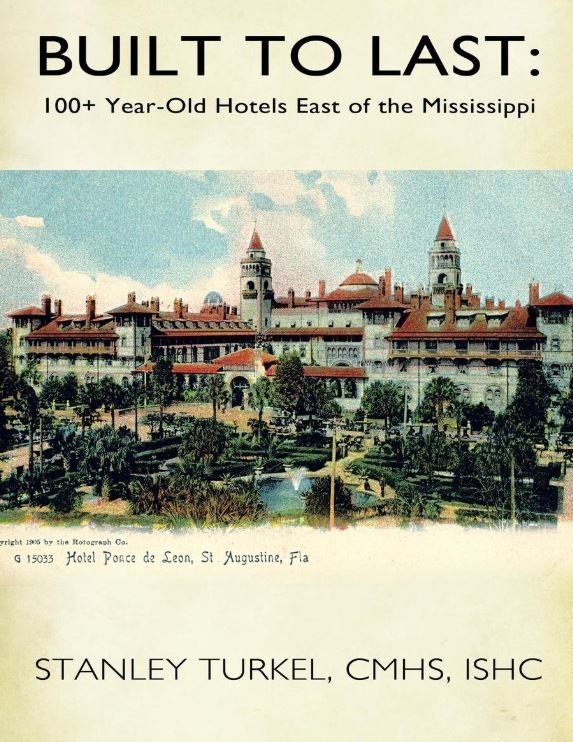
Guest Historian Series
Read Guest Historian SeriesNobody Asked Me, But… No. 153;
Hotel History: The Sagamore Hotel (1883), Bolton Landing, New York*
By Stanley Turkel, CMHS
More than 132 years ago, hotel operator Myron O. Brown, manager of the Mohican House Hotel in Bolton Landing, convinced four millionaires, who were summer residents on Lake George, to build an exclusive resort community. Together they bought Green Island and opened the Sagamore Hotel in 1883 with luxurious accommodations. They were later joined by John Boulton Simpson of New York City who was named company president. The architects were the Wilson Brothers from Philadelphia under the supervision of M.O. Brown who became its manager until 1905. A Glens Falls photographer and writer named Seneca Ray Stoddard wrote about the hotel's opening:
“The hotel building stands on high ground and commands, on every side, extended views of the lake and mountains. It is built in the style popularly supposed to belong to the sixteenth century; its varied porticoes, balconies and gables all admirably displayed by the harmonious colors with which it is painted. Within will be found every hotel convenience and comfort, including hydraulic passenger elevator, electric bells, telegraph office, etc….
Many of the rooms are arranged en suite with outside entrances, and all rooms are illuminated with the Edison electric light…
Aquatic amusements need not languish in want of means for enjoyment as a fleet of boats of various kinds will be found at the landing, ranging from the tiny skiff to the comfortable steam-yacht. From the ample dock, broad drives and walks lead through overhanging trees up to the south front of the hotel and along the west shore of the island to the handsome rustic bridge which connects it with the mainland.”
Badly damaged by fire in 1893 and burned to the ground in 1914, the Sagamore was fully reconstructed in 1930 by Dr. William G. Beckers, one of the hotel's earliest stockholders and William H. Bixby, a St. Louis industrialist. The Bixbys had just financed Charles Lindbergh’s trans-Atlantic flight on the “Spirit of St. Louis” in 1927. The architects were J.E.R. Carpenter of New York and Robert H. Rheinlander of Glens Falls, N.Y.
The Lake George area surrounding The Sagamore is rich in history. As early as 1642 it was explored by the French who named the lake "Lac du Saint Sacrement" (Lake of the Blessed Sacrament) in honor of the Catholic sacrament of the Eucharist. Fighting among the French, British and native population occurred in the lake region during the French and Indian War, and was dramatized by James Fenimore Cooper in The Last of the Mohicans. After the British victory the lake was named for the British King George II.
Throughout its history, the area has been a social center for the wealthy residents of Green Island and Millionaires Row, the stately mansions along the lake's western shore. In 1954, the hotel was headquarters for the National Governor's Conference, presided over by Vice President Richard M. Nixon, and by New York State Governor Thomas E. Dewey.
In 1929, a new Sagamore Golf Course designed by the famous golf architect and engineer Donald J. Ross was completed at a cost of $500,000.
The Sagamore Horse Shows and Gold Cup Speedboat Races were held during the 1930s and 1940s. For fifteen years, the Sagamore Hotel was managed by Karl P. Abbott, one of New England’s most famous hotel operators. He had overseen the construction of the new Sagamore Hotel which opened on July 1, 1930. The first season’s successful operations gave the new Sagamore a splendid reputation which enabled it to be profitable through the depression years.
The hotel subsequently fell into disrepair and closed its doors in 1981. In 1983, one hundred years after construction of the first Sagamore Hotel, builder and real estate developer Norman Wolgin, of Philadelphia, purchased the hotel and restored it to its former grandeur. With Kennington Ltd., Inc. of Los Angeles, Wolgin formed the Green Island Associates which produced a splendid restoration. In 2008, the Sagamore was purchased by Ocean Properties, LTD who later invested an additional $50 million to modernize the resort. The Sagamore is listed in the National Register of Historic Places and is a member of Historic Hotels of America.
*excerpted from his book Built to Last: 100+Year-Old Hotels East of the Mississippi
*****
About Stanley Turkel, CMHS
Stanley Turkel is a recognized consultant in the hotel industry. He operates his hotel consulting practice serving as an expert witness in hotel-related cases and providing asset management an and hotel franchising consultation. Prior to forming his hotel consulting firm, Turkel was the Product Line Manager for worldwide Hotel/Motel Operations at the International Telephone & Telegraph Co. overseeing the Sheraton Corporation of America. Before joining IT&T, he was the Resident Manager of the Americana Hotel (1842 Rooms), General Manager of the Drake Hotel (680 Rooms) and General Manager of the Summit Hotel (762 Rooms), all in New York City. He serves as a Friend of the Tisch Center and lectures at the NYU Tisch Center for Hospitality and Tourism. He is certified as a Master Hotel Supplier Emeritus by the Educational Institute of the American Hotel and Lodging Association. He served for eleven years as Chairman of the Board of the Trustees of the City Club of New York and is now the Honorary Chairman.
Stanley Turkel is one of the most widely-published authors in the hospitality field. More than 275 articles on various hotel subjects have been posted in hotel magazines and on the Hotel-Online, Blue MauMau, Hotel News Resource and eTurboNews websites. Two of his hotel books have been promoted, distributed and sold by the American Hotel & Lodging Educational Institute (Great American Hoteliers: Pioneers of the Hotel Industry and Built To Last: 100+ Year-Old Hotels East of the Mississippi). A third hotel book (Built To Last: 100+ Year-Old Hotels in New York) was called "passionate and informative" by the New York Times. Executive Vice President of Historic Hotels of America, Lawrence Horwitz, has even praised one book, Great American Hoteliers Volume 2: Pioneers of the Hotel Industry:
- “If you have ever been in a hotel, as a guest, attended a conference, enjoyed a romantic dinner, celebrated a special occasion, or worked as a hotelier in the front or back of the house, Great American Hoteliers, Volume 2: Pioneers of the Hotel Industry is a must read book. This book is recommended for any business person, entrepreneur, student, or aspiring hotelier. This book is an excellent history book with insights into seventeen of the great innovators and visionaries of the hotel industry and their inspirational stories.”
Turkel was designated as the “2014 Historian of the Year by Historic Hotels of America,” the official program of the National Trust for Historic Preservation. This award is presented to an individual for making a unique contribution in the research and presentation of history and whose work has encouraged a wide discussion, greater understanding and enthusiasm for American History.
Works published by Stanley Turkel include:
- Heroes of the American Reconstruction (2005)
- Great American Hoteliers: Pioneers of the Hotel Industry (2009)
- Built To Last: 100+ Year-Old Hotels in New York (2011)
- Built To Last: 100+ Year-Old Hotels East of the Mississippi (2013)
- Hotel Mavens: Lucius M. Boomer, George C. Boldt and Oscar of the Waldorf (2014)
- Great American Hoteliers Volume 2: Pioneers of the Hotel Industry (2016)
- Built To Last: 100+ Year-Old Hotels West of the Mississippi (2017)
- Hotel Mavens Volume 2: Henry Morrison Flagler, Henry Bradley Plant, Carl Graham Fisher (2018)
- Great American Hotel Architects Volume 1 (2019)
- Hotel Mavens Volume 3: Bob and Larry Tisch, Curt Strand, Ralph Hitz, Cesar Ritz, Raymond Orteig (2020)
Most of these books can be ordered from AuthorHouse—(except Heroes of the American Reconstruction, which can be ordered from McFarland)—by visiting www.stanleyturkel.com, or by clicking on the book’s title.
























